
Reproductive
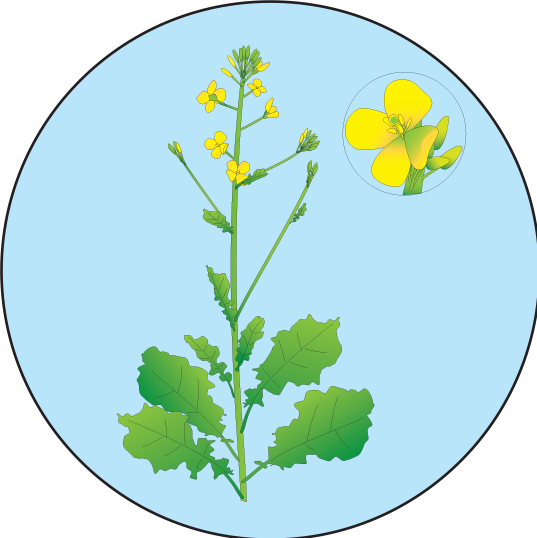
10% flowering
10% flowering is when 10 flowers are open on the main stem. Flowering begins on the main stem, with the lowest buds opening first and flowering continuing upward. Three or more flowers open per day. At first flower the stem is 30-60% of its maximum height.
Management: Monitor for cabbage seedpod weevil from bud formation through flowering stages.
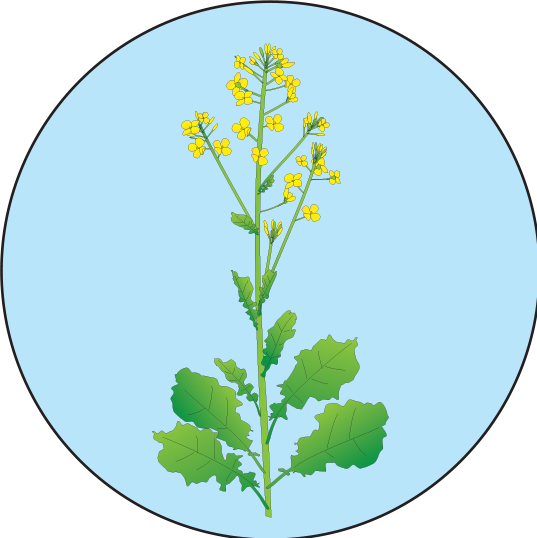
30% flowering
30% flowering is when there are 20 flowers open on the main stem. Amount of branching depends on plant population and environmental stresses.
Management: Risk of white mould is typically high in healthy stands. Thick, moist canopies and temperatures of 15-25°C are ideal for mould development. Fungicide labels state application should occur at 20-50% bloom.

50% flowering
50% flowering is when there are greater than 20 flowers open on the main stem and open flowers on branches. Small pods will be visible on the lower stem.
Management: The window for fungicide application closes after 50% bloom, later applications are not effective.
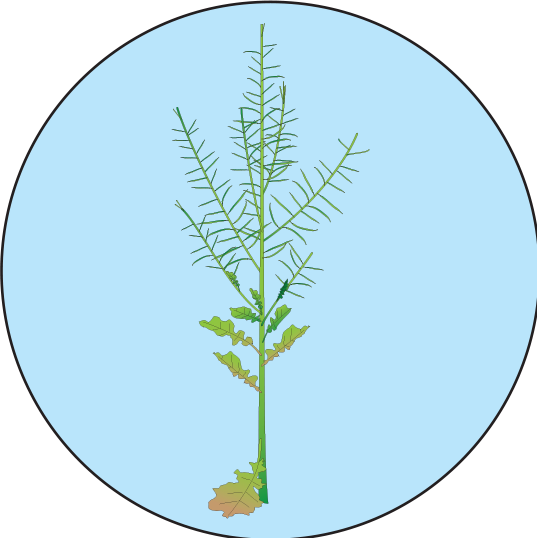
Ripening begins
Seed colour and coat are changing and drying out. Pods begin to lose their green colour. Grain filling typically lasts 35-55 days. Maximum seed dry weight is reached at 70-80 days after
first flower.
Management: Crop drydown occurs naturally over time. Pre-harvest herbicides will control weeds and assist with drydown but do not hasten maturity. Follow herbicide label specifications for application timing.

Fully ripened
Seeds are mature and losing moisture, and final seed weight has been achieved. All pods have reached maturity and are split easily along the centre membrane.
Management: Canola is ripe when pods are dry and rattle when shaken. Begin harvest as soon as the crop is fully ripened. Seeds should be 8-10% moisture at harvest. Moisture can drop a few percent during hot days. Stems may still be green. content for overwintering success. Do not seed canola in fields or regions where winter wheat survival is typically poor.
Seed colour change
Speckling

Seeds reach maturity at about 40% moisture. Seed moisture is lost at 1-3% per day. Seed coats turn from green to yellow to brown, with colour depending on the weather and variety.
Turning

Seed curing begins at the bottom of the main stem. Seed colour change advances up the stem at about 10% every 2-3 days. Seed colour is a better indicator of moisture content than pod or stem colour.
Fully turned

Delayed harvest can result in heated seed. Harvest should occur when there are fewer than 2% green seed and 0.1% heated seed. Crush seeds on white paper to determine the percent that are distinctly green or heated (brown to black) inside.
Cabbage seedpod weevil
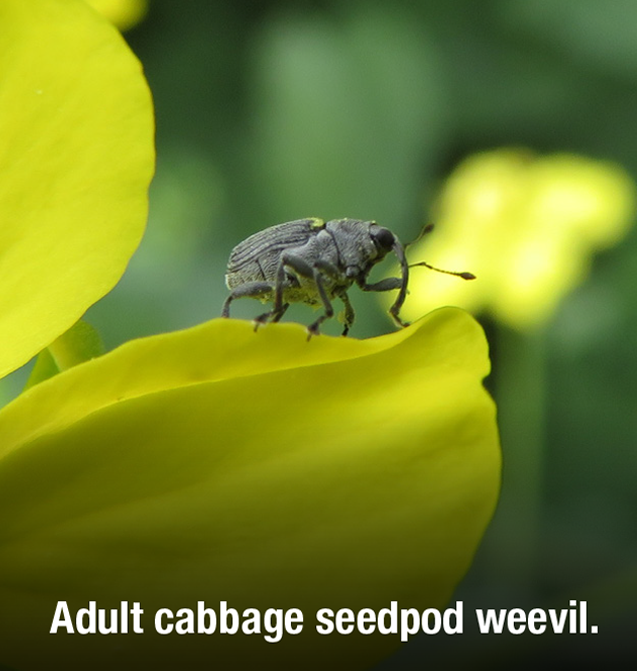
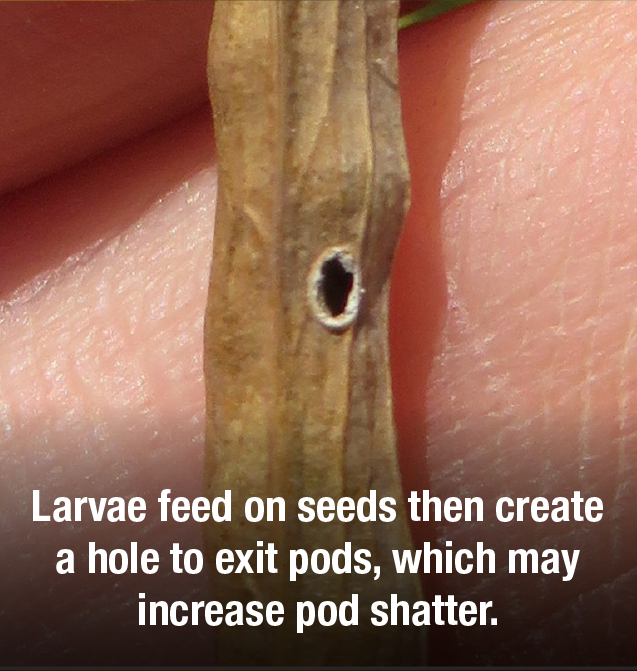
Monitor for cabbage seedpod weevils from the first appearance of flower buds through to the end of flowering.
- Adults emerge when temperatures reach 15°C.
- Visible on buds and abundant at field edges.
- Scout using a sweep net in multiple areas of the field. Action threshold is an average of 2-4 per sweep.
- Larva feed on seeds in pods. Adult feeding on buds does not usually impact yield.
- If threshold is reached, protect with insecticide at 10% bloom when adults are laying eggs in newly developing pods.
For more information contact meghan.moran@ontario.ca
Illustrations and reference information provided by Michael J. Stamm and Ignacio A. Ciampitti, Canola Growth and Development, Kansas State University, July 2017.